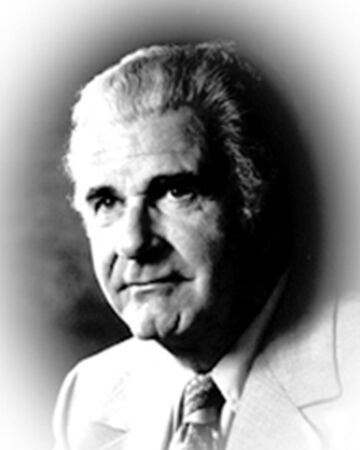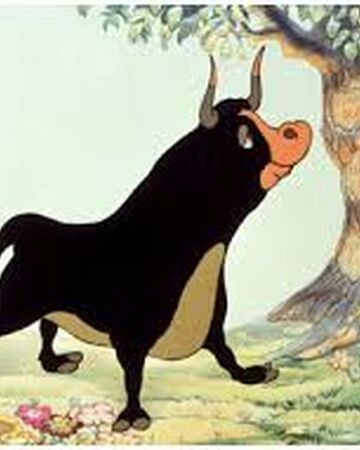Chapter 13: The Old Lion (Cont’d)
Excerpt from The King is Dead: The Walt Disney Company After Walt Disney, an Unauthorized History by Sue Donym and Arman N. Said
In 1982 Card Walker, Chairman and CEO of Walt Disney Productions, was a man living in fear of the changing world around him. He’d given the better part of his life to the company, and to seeing his mentor Walt Disney’s grand vision enacted. This he had promised to Walt almost twenty years earlier, and he was damned if he wasn’t a man of his word.
Card Walker in the 1980s (image source “disney.fandom.com”)
He’d worked hard to protect Walt’s utopian vision and old American values in this cynical, changing world that seemed less grounded in reality every day. Sex and violence played on the big screen and small alike. Authority, faith, traditions, and institutions were now, according to the studios that produced this schlock, to be feared and distrusted. Music seemed to get louder and more sophomoric every year. Meanwhile, the same Japanese companies whose products had rained death down upon him and his shipmates in the Pacific were now flooding the American market with cheap, tiny cars and electronics, which were, in turn, causing American factories to shutter their doors.
And, despite his and others’ efforts to hold back the tide, this strange new world continued to creep into Disney through the seams. The new animators from out of Cal Arts were…strange, even weird. Some of the things they wanted: horror movie stuff, sentient appliances, rotting skeletons, dead dogs…what would Walt think? Even the ideas dim, reliable old Ron Miller was coming up with were pushing Walt’s company farther into this awful new reality, with PG cartoons and movies with sex and even nudity under consideration!
“I’m feeling more every day like the old lion beset by younger rivals,” he confided in Donn Tatum. And just as the new usurper will kill the cubs of the vanquished lion, so did Walker fear that some New Hollywood phony corporate type was going to come in and kill everything that Walt had set in place, and that he and Tatum had helped to preserve[1].
And nothing seemed to drive home the surrealism of the situation more than the arrival of Jim Henson and the Muppets crew. The Muppets themselves were anarchic, violent, and insane. The Muppet crew seemed little better. He’d heard rumors of raucous parties at the Henson company[2], which couldn’t help but remind him of the infamous “Walt’s Field Day” party of ’38[3] and how that party had upended Disney company culture.
And Walker truly had no idea what to think of the tall, thin man at their center whose hair would get him banned from working at Disneyland. On one hand, Henson had the same infectious energy and bold sense of vision that Walt had always radiated. On the other hand, the two were so different: Walt, the clean-cut utopian who endeavored to never be seen drinking or smoking in public, and Jim, the hippie who seemed to glow with the unbridled rebellious energy that had shattered the previous decades.
Since coming to Disney, Henson seemed like the pied piper, leading all of the animators, Imagineers, and artists down new and unorthodox creative pathways. On the surface he seemed so sweet, so innocent…and yet there was that impish energy that seemed to have seduced even Miller. Henson never sat up straight. He rarely maintained eye contact in a dispute. He never fought back in an argument, but ran away from conflict. He let the others do the arguing for him. Was it cowardice, or disrespect?
And the others he brought with him could be just as frustratingly inscrutable. Lazer he could deal with: an old IBM man who had a proper handshake. Gottesman likewise. Others, however, were the source of unending stress, like the irascible Bernie Brillstein, another one of those Hollywood phonies. Brillstein and Walker would constantly yell at each other over some disagreement he’d had with Henson’s vision, trading ever-harder verbal blows like pugilists. Even more frustrating for Walker was Frank Oz, the tall, thin, balding man with the pimp mustache and the thick glasses. If Brillstein was a pugilist, then Oz was a fencer, standing still, unblinking, a wry smirk on his face throughout the worst of Walker’s verbal barrages, only to riposte with a quiet, snide, generally profane quip that went straight to the proverbial heart every time. In a strange way Walker respected and even liked the little bastard.
But for all of his hippie dreamer qualities, Henson seemed to genuinely love Walt Disney. He spoke at length to Walker during their more amicable moments about how much Disney’s art had meant to him while growing up. He spoke about how magical Disneyland and Disney World had been for him and his children, children that, Card had to admit, were delightfully intelligent, well spoken, and polite, despite their long hair and permissive new age upbringing. Henson clearly seemed to want to keep raising the Disney banner high, even if the wind blew in a different direction.
Henson at least wasn’t a New Hollywood shlock peddler or a corporate raider. Though his bizarre “Crystal” movie was dark and nightmarish, and possibly promoted witchcraft, it wasn’t profane or cynical. Like Walt, Henson was an idealist. Like Walt, Henson wanted to explore new mediums in new, risky, and exciting ways. Like Walt, Henson had incredible attention to detail and would accept nothing less than perfection. Like Walt, Henson put artistic vision ahead of short-term profits. Like Walt, Henson wanted to make the world a better place, even if that future vision differed greatly from Walt’s in certain respects. Jim Henson even grew up in rural Mississippi, not far either geographically or culturally from the small Missouri town where Walt grew up.
In short, Walker came to accept, Henson wanted to make magic, not money. That he wanted the “Dream”, not the “Scheme”, as “Idiot Nephew” Roy E. Disney liked to say.
In late 1982 Card Walker gave the dedication at the opening of EPCOT, Jim Henson at his side. Though a far cry from the functioning City of Tomorrow that Walt had envisioned, this EPCOT was still, Walker felt, in keeping with the spirit of the world Walt always intended. EPCOT was the completion of Walt’s Last Dream and thus a fitting place for Walker to step aside and hand off the reigns.
He’d worked hard to keep the Disney dream alive and to be the torch bearer of Walt’s vision. But it was time, however much the idea pained and frightened him, for a new generation to take up the mantle.
E. Cardon Walker retired as CEO of Walt Disney Studios in February of 1983[4]. He remained on as Chairman until May of that year, determined to see Tokyo Disneyland opened. He would retain a position on the Board of Directors, a Chairman Emeritus alongside his old friend and rival Donn Tatum, two of the last of the Old Generation of Disney Men.
Ron Miller would take over as CEO while retaining the offices of President and COO while Disney board member Raymond “Ray” Watson, former President of the Irvine Company, would later take over as interim Chairman[5].
With Miller now at the helm, Walt Disney Productions would enter into a new and turbulent era.
* * *
Stocks at a Glance: Walt Disney Productions (DIS)
January 1st, 1983
Stock price: $112.70
Major Shareholders: Henson family (9.2%), Roy E. Disney (3%), Disney-Miller family (11%)
Outstanding shares: 34.3 million
(Image source “Disney.fandom.com”)
[1] I am, of course, speculating here. Accounts I hear or I read about Card Walker describe him either as “tough but fair” or an arrogant jerk and bully. He certainly comes across rather like the latter in
Storming the Magic Kingdom and
Disney War. In my experience, arrogance and bullying almost inevitably conceal fear and/or a sense of inadequacy. Given his conservative sociopolitical beliefs and his experiences in the Pacific Theater in WWII, I speculated that he, like many of his generation, was having a hard time dealing with the monumental changes of the 1960s and 1970s. But I reiterate that I do not know for certain and can only guess. Consider everything here “unreliable narration” from a sensationalist tell-all text. The “lion” quote is my own invention.
[2] Henson Associates was famous for their wild parties, one of which reportedly featured the “Nookie Monster”.
[3] Google it. Wild stuff!
[4] As he did in our timeline.
[5] As in our timeline, Miller takes over as President and CEO while Watson, a real estate development mogul, takes the reigns as Chairman. This choice reflects concerns on the board with Miller’s inexperience and also seems to reflect the ingrained fixation with the theme parks at the expense of the studios that marked Disney management at the time.

